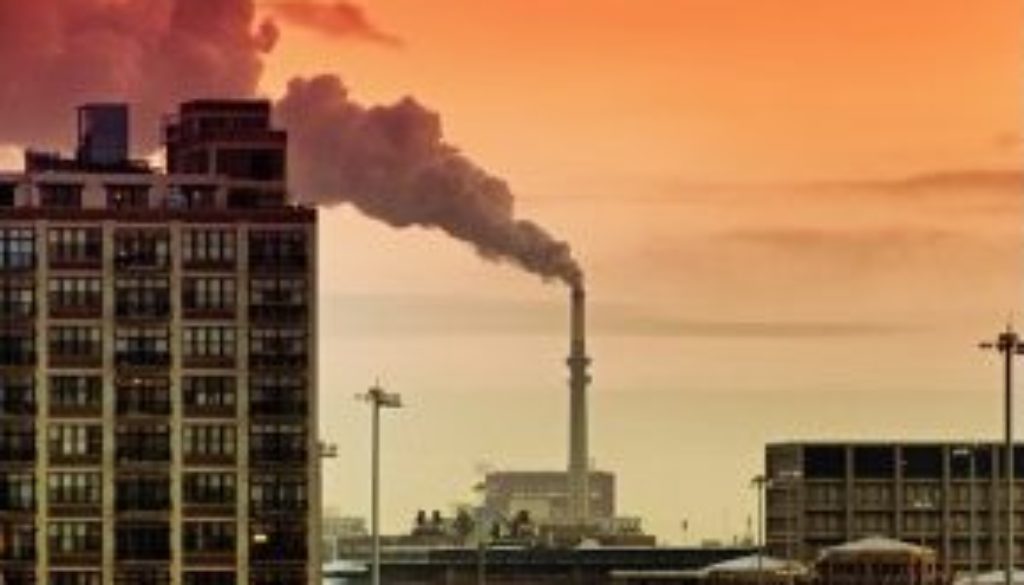The Clean Power Plan Will Help Reduce Power Plant Pollutant Emissions Among Our Most Exposed Communities
By Juan Declet-Barreto, Natural Resources Defense Council
The EPA just released final rules to limit carbon emissions from existing power plants. These rules, known collectively as the Clean Power Plan, are a huge step in reducing the dangerous power sector carbon pollution that accounts for 40 percent of the U.S.’ emissions footprint, drives global climate change, and is already endangering human health. Those of us working to protect our most vulnerable communities from the impacts of carbon and co-pollutant emissions like particulates and ozone precursors commend the EPA for listening to the concerns of the environmental justice (EJ) community and incorporating those concerns into the final rules. As EJ advocates and scholars have demonstrated, many of the nation’s coal-based power plants are located in or nearby low-income and minority communities, exposing populations to particulate matter, as well as to ozone precursors that turn into lower-atmosphere ozone. It is critical to protect these communities, as they are often deprived of social and economic resources to prevent adverse health outcomes worsened by climate change like asthma and respiratory allergy attacks.
To address these concerns, the Clean Power Plan provides a series of recommendations and requirements that states must take into account in order to prevent disproportionate burdens on vulnerable communities as a result of states’ implementation of the rules. These include mapping the intersection of pollutant sources and vulnerable communities, engagement with communities during state plan development, renewable energy/energy efficiency incentives to offset emissions reduction targets, and continuous EPA engagement by assessing and reviewing state plan impacts on EJ communities. Furthermore, as stated in the final rule document, if states want to secure an extension to submit implementation plans to the EPA, they have to demonstrate how they are “meaningfully engaging vulnerable communities and other interested stakeholders as part of their public participation process” (p. 1324).
Proximity analysis of power sector pollutant impacts
In this note, I’d like to unpack the mapping of pollutants and vulnerable communities, or what the EPA refers to as a proximity analysis, what it entails in an EJ context, and what tools the EPA is providing to conduct this analysis. A proximity analysis involves using U.S. Census and power plant emissions data in a Geographic Information System (GIS) to calculate demographics within a specified radius from power plants (a 3-mile distance is common). The analysis should consider the combination of both low-income and minority populations to account for urban/rural differences in race/ethnicity and socio-economic status. EPA has conducted a first-order proximity analysis for power plants in the U.S. and summarized results in the “EJ Screening Report for the Clean Power Plan”
As an illustrative example, I’ve conducted a quick-and-dirty (pun fully intended) mapping of the Bridgeport Station (Connecticut) power plant and the racial/ethnic composition of Census Tracts within 1, 3, and 5-mile radial buffers around the plant. The Bridgeport station emitted a little over 156,000 short tons of carbon dioxide, 107 short tons of NOx, and almost 140 short tons of SO2 in 2012, according to a power plant benchmarking report. For simplicity, I’ve left out income variables. I’ve estimated the size of the population within the area of each buffer, taking into account that Census Tracts only partially within the buffer have a fraction of their population within the buffer.
The table clearly shows that the concentration of minority populations increases as distance to the power plant decreases. This strongly suggests that African Americans, Native Americans, Asians, and Hispanics live closer to the plant, and are more highly exposed to the plant’s emissions than the White population.
Proximity analyses of populations nearby power plant emissions are a first step in identifying the magnitude of exposed communities, but they don’t take into account the complex photochemical interaction (that is, how pollutants behave and transport in the presence of solar rays and wind) of volatile organic compounds (VOCs) and nitrous oxides (NOx) that turn into ozone, or how fine particulate matter is dispersed locally and away from the power plant. Still, a proximity analysis, combined with a complete assessment of EJ burdens on vulnerable populations, can help states craft plans to ensure that minority and low-income communities are not disproportionately exposed to power plant pollutants as a result of compliance with the Clean Power Plan. Besides the EJ Screening Report, the EPA has offered guidance and tools to assist states in assessing disproportionate burdens. For example, the EPA has recommended that the EJ methodologies both in the EPA’s Draft Solid Waste rule and Guidance on Considering Environmental Justice During the Development of Regulatory Actions, as well as California’s guidance on assessing EJ burdens should be used by states to assess and prevent disproportionate burdens as a result of Clean Power Plan implementation plans.
Now that the rules are finalized and we know what tools we have at our disposal, our task is clear: Environmental justice advocates, scientists, scholars, and environmental advocacy organizations have to work together with states to implement the best possible compliance plans that will reduce dangerous carbon pollutants and co-pollutants in all communities, and especially to protect our most vulnerable communities. We have a moral obligation to protect our planet and our people. As President Obama said: “We only get one home. We only get one planet. There’s no Plan B.”
Learn more about the Clean Power Plan here.



